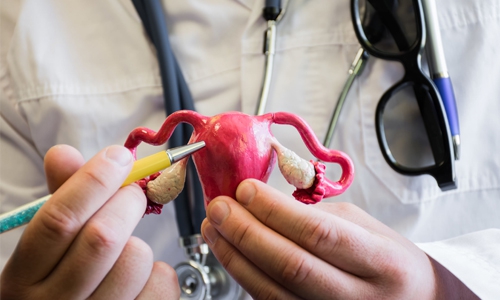
Women’s health is something that needs attention and should be checked regularly. Ovarian cysts, in particular, are not something that can be overlooked. This is because they can occur without any warning signs. Despite the fact that cysts can be treated, they can still have a major impact on the body. Therefore, understanding ovarian cysts and how to self-monitor is the best way to prevent and deal with them.
Understanding Your Ovaries
The ovaries are small organs located in the lower abdomen on both sides of the uterus. Women have two ovaries, which serve two key functions: producing eggs and producing and balancing the hormones estrogen and progesterone. Estrogen, in particular, stimulates menstruation, the process that occurs every month in which the ovaries produce a small egg for fertilization.
Causes of Ovarian Cysts
An ovarian cyst is a fluid-filled sac that develops in the ovaries. A cyst can form for various reasons. An abnormal menstruation can cause a buildup of fluid and result in a cyst; the eggs might not be released from the ovaries, which can cause cysts in both ovaries; or abnormal cell division might result in a cyst. For this reason, cysts are more likely to form in the ovaries than other organs. If found in young women, the cysts are usually benign and don’t require treatment. However, in older women near menopause, the cysts could cause complications and may become cancerous.
Types of Ovarian Cysts
There are several types of ovarian cysts. They are common in the women’s reproductive period (15-49 years old). It is important to understand the 5 types.
- Functional cysts are the most common in women.
- Polycystic ovaries is a condition where the ovaries have many cysts. Normally, follicles, which are sacs that contain the eggs, release the eggs from the ovaries. In some women, the eggs don’t mature and aren’t released from the follicles, resulting in an accumulation of cysts in the ovaries.
- Cysts can also come as a result of the disease endometriosis. In this disease, endometrial tissue that normally grows inside the uterus can develop outside the uterus and attach to the ovaries. These can cause severe pain and affect fertility.
- Cysts can also develop on the outer surface of the ovaries (cystadenomas). Most of these cysts have fluid inside.
- Some cysts can contain tissues that look like tissues from other parts of the body, such as skin, hair, or teeth. These are known as dermoid cysts.
Symptoms to Look For
What’s alarming about ovarian cysts is that most of them don’t cause any symptoms and may not be found until they’re observed by a doctor during a pelvic exam. However, symptoms can appear as the cyst grows. Symptoms may include:
- Abdominal pain
- Frequent urination / difficulty urinating
- Aches or pains in the lower back
- Painful intercourse
- Severe menstrual pain / abnormal bleeding
Diagnosis
Diagnosis of ovarian cysts can be performed by a specialist obstetrician-gynecologist. The doctor will use an ultrasound to get a clear look inside the pelvic area. The ultrasound can be performed in one of two ways: through the abdomen or through the vagina. It doesn't take long and isn’t painful. The important thing is to be able to identify the size, shape, position and number of cysts in detail. This information allows the doctor to make a clear diagnosis and develop an appropriate treatment plan.
Dermoid Cysts are not Black Magic
One of the more interesting types of cysts is dermoid cysts. These cysts can contain fat, teeth, hair, bone, or other tissues inside the cyst. A traditional Thai belief is that these tissues grow inside the body as a result of black magic. However, the reality is that these cysts occur when a non-cancerous tumor grows and contains things like skin cells and sebaceous glands. When the oils and/or tissue cannot “escape,” they build up inside the cyst. What’s concerning about dermoid cysts is that they don’t cause any symptoms until they suddenly cause severe abdominal pain, requiring a doctor’s visit. Treatment can include surgery, and it is possible for them to reoccur.
You Don’t Have to Worry about Ovarian Cysts
Currently, ovarian cysts can be treated by minimally invasive surgery (laparoscopic surgery). The advantages of this type of surgery are that it results in small wounds, is less painful, allows for faster recovery, and can facilitate a return to normal life. Nevertheless, it is still really important to keep an eye out for any abnormalities in your body and not neglect your regular check-ups with your obstetrician-gynecologist at least once a year if you’ve never had cysts before. For those who have had ovarian cysts, it is advisable to see an obstetrician-gynecologist for follow-ups at 1 month, 3 months, 6 months and 1 year.